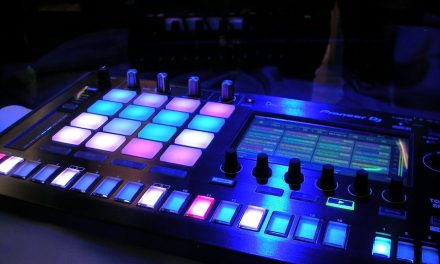Table of Contents
“Unlocking the Power of IoT to Drive Informed Leadership Choices”
Introduction
Introduction:
The Internet of Things (IoT) has revolutionized the way we interact with technology and has the potential to transform various aspects of our lives, including leadership decision-making. By leveraging IoT, leaders can access real-time data, gain valuable insights, and make more informed decisions. This article explores the concept of leveraging IoT for better leadership decisions, highlighting the benefits and potential challenges associated with this approach.
The Role of IoT in Enhancing Decision-Making for Leaders

The Role of IoT in Enhancing Decision-Making for Leaders
In today’s fast-paced and interconnected world, leaders face numerous challenges when it comes to making informed decisions. The sheer volume of data available can be overwhelming, and the need to analyze and interpret this data accurately is crucial. This is where the Internet of Things (IoT) comes into play, offering leaders a powerful tool to leverage in their decision-making processes.
IoT refers to the network of interconnected devices that collect and exchange data through the internet. These devices, ranging from sensors and wearables to smart appliances and industrial machinery, generate vast amounts of data that can be harnessed to gain valuable insights. By leveraging IoT, leaders can access real-time information, enabling them to make more informed and timely decisions.
One area where IoT can significantly enhance decision-making is in supply chain management. With IoT-enabled sensors placed throughout the supply chain, leaders can track the movement of goods, monitor inventory levels, and identify potential bottlenecks or inefficiencies. This real-time visibility allows leaders to make data-driven decisions, such as adjusting production schedules or reallocating resources, to optimize the supply chain and ensure timely delivery of goods.
Another area where IoT can have a profound impact is in the realm of customer experience. By collecting data from IoT devices, leaders can gain insights into customer behavior, preferences, and needs. For example, smart home devices can provide information on energy usage patterns, allowing utility companies to offer personalized energy-saving recommendations to their customers. This data-driven approach not only enhances customer satisfaction but also enables leaders to tailor their products and services to meet specific customer demands.
IoT can also play a crucial role in improving workplace safety and productivity. By equipping employees with wearable devices that monitor vital signs and detect potential hazards, leaders can proactively address safety concerns and prevent accidents. Furthermore, IoT-enabled devices can automate routine tasks, freeing up employees’ time to focus on more strategic and value-added activities. This increased efficiency and productivity can have a significant impact on the overall success of an organization.
However, it is important to note that leveraging IoT for better leadership decisions also comes with its challenges. The sheer volume and complexity of IoT data require leaders to have the necessary analytical skills and tools to extract meaningful insights. Additionally, privacy and security concerns surrounding IoT data must be addressed to ensure the protection of sensitive information.
To overcome these challenges, leaders must invest in the right technology infrastructure and talent. This includes implementing robust data analytics platforms and hiring data scientists who can effectively analyze and interpret IoT data. Furthermore, leaders must prioritize data privacy and security by implementing stringent protocols and encryption measures to safeguard sensitive information.
In conclusion, IoT offers leaders a powerful tool to enhance their decision-making processes. By leveraging the vast amount of data generated by IoT devices, leaders can gain valuable insights into various aspects of their business, from supply chain management to customer experience and workplace safety. However, to fully harness the potential of IoT, leaders must invest in the necessary technology infrastructure and talent while addressing privacy and security concerns. With the right approach, leaders can leverage IoT to make more informed and timely decisions, ultimately driving the success of their organizations.
Exploring the Benefits of IoT in Leadership Decision-Making
The Internet of Things (IoT) has revolutionized the way we live and work. From smart homes to connected cars, IoT has permeated every aspect of our lives. But its impact goes beyond convenience and efficiency; it has the potential to transform leadership decision-making as well. In this article, we will explore the benefits of leveraging IoT in leadership decision-making and how it can enhance the decision-making process.
One of the key advantages of IoT in leadership decision-making is the availability of real-time data. Traditionally, leaders had to rely on historical data and gut instincts to make decisions. However, with IoT, leaders can access real-time data from various sources, such as sensors, wearables, and connected devices. This real-time data provides a more accurate and up-to-date picture of the situation, enabling leaders to make informed decisions based on facts rather than assumptions.
Furthermore, IoT enables leaders to gather data from a wide range of sources. For example, in manufacturing, IoT sensors can collect data on machine performance, energy consumption, and product quality. This data can then be analyzed to identify patterns, trends, and anomalies, providing valuable insights for decision-making. By leveraging IoT, leaders can tap into a wealth of data that was previously inaccessible, allowing them to make more informed and data-driven decisions.
In addition to real-time data and a wide range of data sources, IoT also enables leaders to automate certain decision-making processes. For instance, in supply chain management, IoT can be used to automate inventory management, order fulfillment, and logistics. By automating these processes, leaders can free up their time and resources to focus on more strategic and value-added activities. This not only improves efficiency but also allows leaders to make better decisions by eliminating human error and bias.
Moreover, IoT can enhance collaboration and communication among leaders and their teams. With IoT, leaders can connect with their teams in real-time, regardless of their physical location. For example, through video conferencing and instant messaging, leaders can communicate with their teams, share information, and make decisions collaboratively. This level of connectivity and collaboration fosters a more inclusive and participatory decision-making process, where diverse perspectives and expertise can be leveraged for better outcomes.
Furthermore, IoT can enable predictive analytics, which can significantly improve leadership decision-making. By analyzing historical data and patterns, IoT can help leaders anticipate future trends and events. For example, in retail, IoT can analyze customer behavior and preferences to predict demand and optimize inventory levels. This predictive capability allows leaders to proactively respond to changes and make decisions that are aligned with future needs and opportunities.
In conclusion, leveraging IoT in leadership decision-making offers numerous benefits. From real-time data and a wide range of data sources to automation and predictive analytics, IoT enhances the decision-making process by providing leaders with accurate, up-to-date information, enabling them to make informed and data-driven decisions. Additionally, IoT fosters collaboration and communication among leaders and their teams, promoting a more inclusive and participatory decision-making process. As IoT continues to evolve and expand, its potential to transform leadership decision-making will only grow, making it an essential tool for leaders in the digital age.
How IoT Can Drive Smarter and More Effective Leadership Decisions
The Internet of Things (IoT) has revolutionized the way we live and work. From smart homes to connected cars, IoT has permeated every aspect of our lives. But its impact goes beyond convenience and efficiency; it has the potential to transform leadership decisions and drive smarter, more effective outcomes.
One of the key ways in which IoT can enhance leadership decisions is through the collection and analysis of data. IoT devices are capable of gathering vast amounts of data in real-time, providing leaders with valuable insights into various aspects of their organization. For example, sensors embedded in manufacturing equipment can monitor performance metrics, such as production rates and energy consumption, allowing leaders to identify areas for improvement and make data-driven decisions.
Furthermore, IoT can enable leaders to have a more comprehensive view of their organization. Traditionally, leaders have relied on reports and feedback from employees to gain insights into the performance of their teams. However, these sources of information are often subjective and limited in scope. With IoT, leaders can access real-time data on employee productivity, engagement, and even health and well-being. This holistic view allows leaders to make more informed decisions and take proactive measures to address any issues that may arise.
In addition to data collection, IoT can also facilitate better communication and collaboration among team members. IoT devices can enable seamless connectivity and information sharing, regardless of geographical location. For example, video conferencing systems equipped with IoT capabilities can provide a virtual meeting experience that is as close to face-to-face interaction as possible. This level of connectivity fosters collaboration and enables leaders to make decisions based on a more comprehensive understanding of the situation.
Moreover, IoT can empower leaders to be more responsive and agile in their decision-making. Real-time data and insights provided by IoT devices allow leaders to identify trends and patterns quickly, enabling them to make timely adjustments to their strategies. For example, a retail leader can leverage IoT data to identify changing customer preferences and adjust their product offerings accordingly. This agility can give organizations a competitive edge in a rapidly evolving market.
However, leveraging IoT for better leadership decisions also comes with its challenges. The sheer volume of data generated by IoT devices can be overwhelming, making it difficult for leaders to extract meaningful insights. Additionally, there are concerns around data privacy and security, as IoT devices are vulnerable to cyber-attacks. Leaders must invest in robust data analytics capabilities and implement stringent security measures to mitigate these risks.
In conclusion, IoT has the potential to revolutionize leadership decisions by providing leaders with real-time data, a comprehensive view of their organization, improved communication and collaboration, and increased agility. However, it is crucial for leaders to address the challenges associated with IoT, such as data overload and security risks. By leveraging IoT effectively, leaders can make smarter, more informed decisions that drive better outcomes for their organizations.
Harnessing the Power of IoT for Improved Leadership Decision-Making
Leveraging IoT for Better Leadership Decisions
In today’s fast-paced and interconnected world, leaders are constantly faced with the challenge of making informed decisions that can drive their organizations forward. With the advent of the Internet of Things (IoT), leaders now have access to a wealth of data that can help them make better decisions. By harnessing the power of IoT, leaders can gain valuable insights into their operations, customers, and market trends, enabling them to make more informed and strategic decisions.
One of the key benefits of IoT for leadership decision-making is the ability to collect and analyze real-time data. IoT devices, such as sensors and smart devices, can be deployed throughout an organization to gather data on various aspects of its operations. For example, sensors can be used to monitor production processes, track inventory levels, and measure energy consumption. This real-time data can then be analyzed to identify patterns, trends, and anomalies, providing leaders with valuable insights into their operations.
By leveraging IoT data, leaders can make more informed decisions about resource allocation. For example, by analyzing data on energy consumption, leaders can identify areas of inefficiency and implement measures to reduce energy waste. Similarly, by analyzing data on inventory levels, leaders can optimize their supply chain and ensure that they have the right amount of inventory at the right time. This data-driven approach to decision-making can help leaders allocate their resources more effectively, leading to cost savings and improved operational efficiency.
IoT can also provide leaders with valuable insights into customer behavior and preferences. By collecting data from IoT devices, such as smart appliances or wearable devices, leaders can gain a deeper understanding of their customers’ needs and preferences. For example, data from smart appliances can reveal usage patterns and help leaders identify opportunities for product improvements or new product development. Similarly, data from wearable devices can provide insights into customers’ health and wellness habits, enabling leaders to tailor their offerings to meet their customers’ needs.
Furthermore, IoT can help leaders stay ahead of market trends and make more strategic decisions. By analyzing data from IoT devices, leaders can gain insights into market demand, competitor activities, and emerging trends. For example, data from IoT devices can reveal shifts in customer preferences or changes in market dynamics. Armed with this information, leaders can make proactive decisions to capitalize on opportunities or mitigate potential risks. This data-driven approach to decision-making can give leaders a competitive edge in today’s rapidly changing business landscape.
However, it is important for leaders to recognize that leveraging IoT for better decision-making requires a robust data infrastructure and analytics capabilities. Leaders need to invest in the necessary technology and expertise to collect, store, and analyze IoT data effectively. They also need to ensure that they have the right talent and skills to interpret and act upon the insights derived from IoT data. Additionally, leaders must prioritize data privacy and security to protect sensitive information and maintain the trust of their customers.
In conclusion, IoT has the potential to revolutionize leadership decision-making by providing leaders with real-time data and valuable insights. By harnessing the power of IoT, leaders can make more informed decisions about resource allocation, gain a deeper understanding of their customers, and stay ahead of market trends. However, it is crucial for leaders to invest in the necessary infrastructure, analytics capabilities, and data privacy and security measures to fully leverage the potential of IoT. With the right approach, leaders can harness the power of IoT to drive their organizations forward and make better decisions in today’s digital age.
Q&A
1. How can IoT be leveraged for better leadership decisions?
IoT can provide real-time data and insights that can help leaders make more informed decisions, improve operational efficiency, and enhance customer experiences.
2. What are some examples of IoT applications for leadership decisions?
Examples include using IoT sensors to monitor and optimize supply chain operations, using data from connected devices to improve product development and innovation, and using IoT analytics to gain insights into customer behavior and preferences.
3. What are the benefits of leveraging IoT for leadership decisions?
Benefits include increased visibility into operations, improved decision-making based on real-time data, enhanced efficiency and productivity, and the ability to proactively address issues before they become major problems.
4. Are there any challenges or risks associated with leveraging IoT for leadership decisions?
Yes, challenges include data security and privacy concerns, integration of IoT systems with existing infrastructure, and the need for skilled personnel to manage and analyze the vast amount of data generated by IoT devices.
Conclusion
In conclusion, leveraging IoT (Internet of Things) can significantly enhance leadership decisions. By collecting and analyzing real-time data from interconnected devices, leaders can gain valuable insights into various aspects of their organization. This data-driven approach enables informed decision-making, improves operational efficiency, enhances customer experiences, and drives innovation. Embracing IoT technology can empower leaders to make better-informed decisions and stay ahead in today’s rapidly evolving business landscape.




